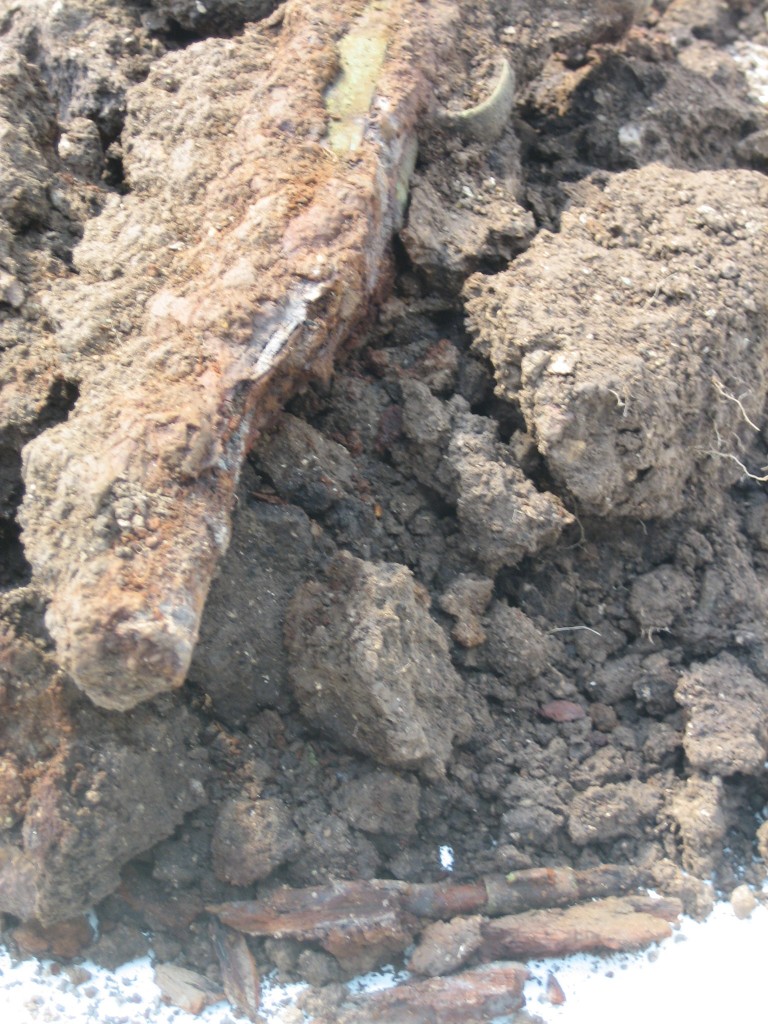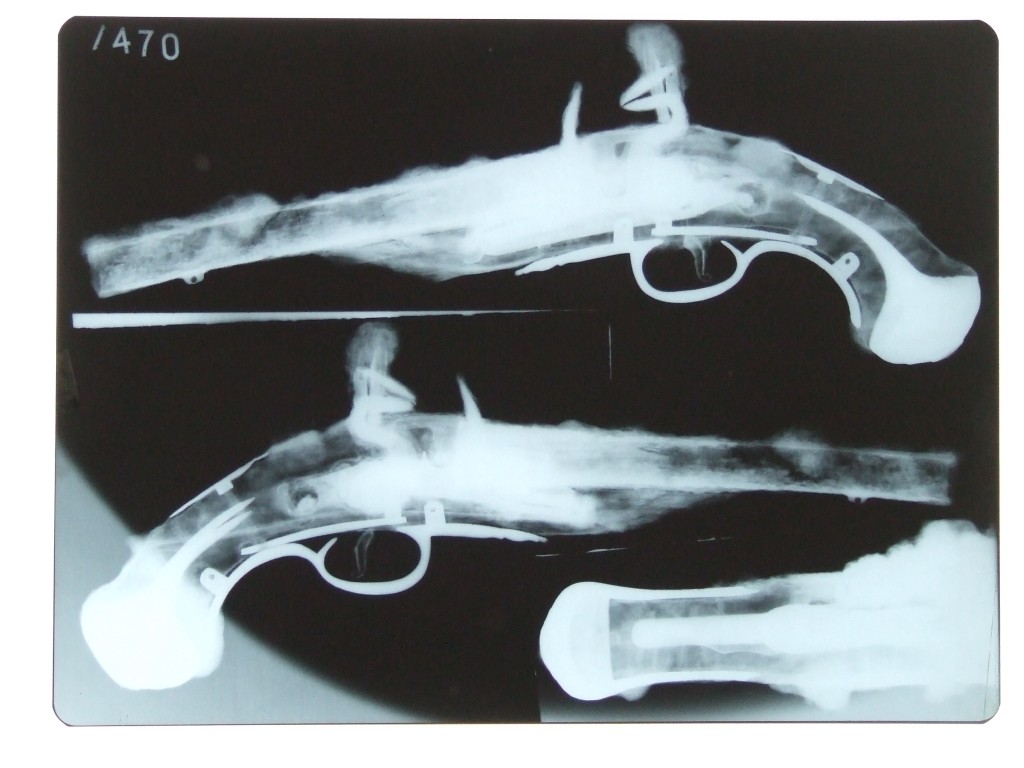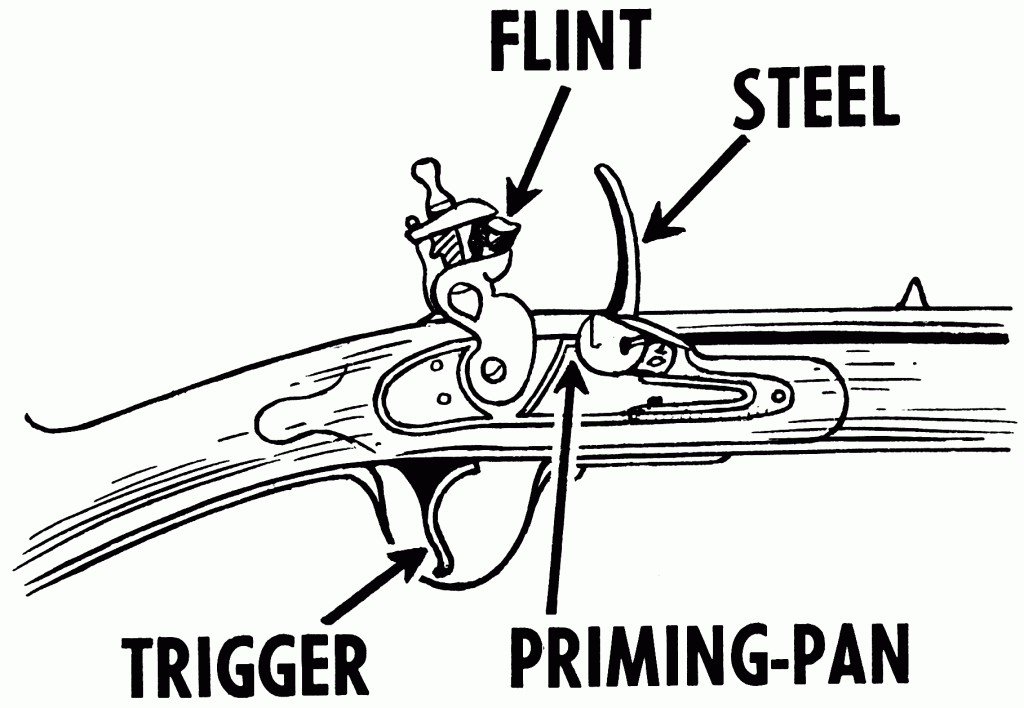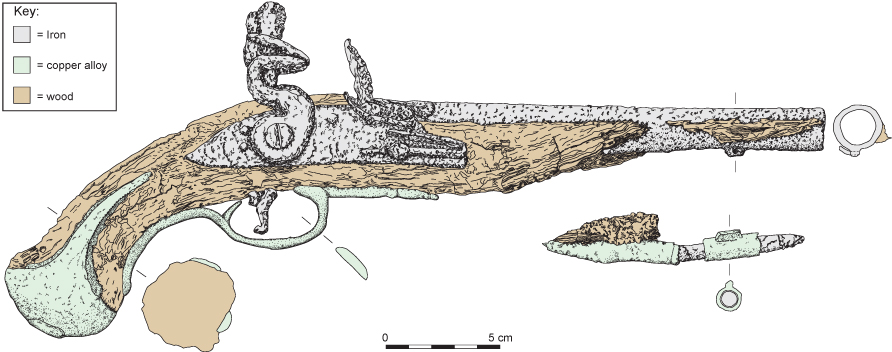Although by its very nature archaeology is about discovery, it is fair to say that on many excavations archaeologists know what they can expect to find. Take for example Irish burnt mounds, often called ‘Fulachta Fiadh’. These are the most common site type in Ireland, and usually consist of a mound of heat affected stones together with an earth-cut and often water-filled trough. They generally date to the Bronze Age, and appear to have been used for a variety of purposes centred around the heating of water.

One thing we most certainly do not expect to find on prehistoric sites are flintlock pistols, but that is exactly what turned up during work on a burnt mound at Whitestown, Co. Waterford. The excavation was carried out by Tom Janes and was being undertaken in advance of construction of the East Waterford Watermains Supply, funded by Coffey Construction on behalf of Waterford County Council. The pistol was discovered in a shallow depression near the burnt mound, in what most probably represented the remains of an old field boundary. It was immediately recognisable as a historic firearm and was carefully removed using a technique called ‘block lifting’. This is where a block of soil is cut around a fragile object so that it can be excavated in controlled laboratory conditions. In this case it was sent to ArchCon Labs who x-rayed and then stabilised the pistol. The x-ray helped to establish that the gun was not loaded, an important first step when dealing with any historic firearm!

Analysis of the pistol established that it was a flintlock. These weapons utilised a system whereby sparks are produced as a flint carried in a spring loaded `cock´ strikes the `steel´ (or `frizzen´), thus igniting the powder and causing the ball to be fired. They first appeared in the 16th century, but did not come into widespread use until the second half of the 17th century. By the 18th century the majority of firearms used this method of powder ignition, until they were superseded in the western world by the percussion system in the mid 19th century. In order to fire a flintlock, a number of steps had to be followed. These were:

A) The cock, holding the flint, is placed in the `half-cock´ position.
B) The gun is loaded from the muzzle end, usually by pouring the desired amount of black powder down the barrel, followed by a round lead ball. The ball is generally wrapped in paper or cloth to insure a tight fit in the barrel. The ball is rammed home with the ramrod, stored underneath the barrel.
C) The pan is primed with a small amount of fine black powder, and the pan cover (of which the `steel´ or `frizzen´ is a part) is positioned to cover it.
D) The cock is moved to the `full-cock´ position.
E) The trigger is pulled, releasing the spring and propelling the cock towards the steel.
F) The cock strikes the steel, forcing it back and exposing the priming pan.
G) The sparks created as the flint in the cock hit the steel cause the priming powder to ignite.
H) The lit powder passes through a touch-hole in the barrel, igniting the powder within and discharging the ball.
Although the pistol from Whitestown was in poor condition due to its long period of exposure, it was possible to draw some conclusions as to its origins. It is most probably a late 18th century military service pistol, possibly originally intended for use by dragoons or mounted troops. This would suggest that its initial owner was probably a member of the British military.

How did the pistol come to be deposited in a field in Co. Waterford? The fact that the pistol was not loaded, has no flint and is at the `half-cock´ storage position suggests that it was probably not discarded in extreme haste, i.e. thrown away during a pursuit. The individual who placed the gun here may have been trying to hide the weapon following an indiscretion, or possibly storing the weapon for later collection, which for some reason never took place. If the hiding place was intended as a temporary storage area it would seem a strange place to select, as the conditions would have ensured the rapid deterioration of the gun. However, the fact that a now removed field boundary or some other construction once overlay the findspot of the pistol (thus offering further protection) cannot be discounted. It is natural to associate finds of weapons such as this pistol with major upheavals around the time of deposition; in this case principally the 1798 and 1848 rebellions. However, it is impossible to directly associate the pistol or its deposition with either of these events. It must also be remembered that this weapon could have been in use for an extremely long period, potentially well into the late 19th century.

What we can say is that whoever concealed this weapon did not want it to be discovered, and this in itself is of interest. The fact that it was never recovered makes one wonder about what may have happened to its last owner. Whatever the circumstances, it lay concealed for between 100 and 200 years until its discovery during works for the East Waterford Water Mains Supply. It is one of the most unusual finds we have ever recovered during excavation works, and was certainly not what we expected to find on a ‘standard’ prehistoric site!
Pingback: Tweets that mention Fulachts and Flintlocks: A Pistol from Whitestown, Co. Waterford | Headlines -- Topsy.com